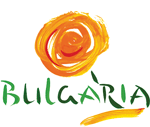
Trademarks in the News: Pride of Place
New York, new mark
New York City is rebranding itself. City lawyers have filed an application for trademark registration of the slogan The World’s Second Home. If approved by the U.S. Patent and Trademark Office, the city will have an exclusive right to use the mark on a list of some 200 products and services, ranging from postcards to baby bibs to walking sticks. It is perhaps not as catchy as “The Big Apple” nickname, which itself replaced “Fun City”, and played an important role in the 1970s campaign to revive New York’s tourist economy. But the city’s administration is hoping that it will prove as popular as the I ♥ NY sign.
The new slogan is designed to reflect the city’s cultural diversity and the multiplicity of its immigrant communities. It is already being actively used to promote New York’s bid to host the 2012 Olympic Games, as in these words from the mayor of New York, Michael Bloomberg: “In New York's public schools, immigrant students hail from 199 [..] nations! We are the world's second home, a five-borough Olympic village where all ethnic and racial groups excel.”
Branding Bulgaria
A positive image campaign run by the Bulgarian Economy Ministry has resulted in agreement on a trademark for use on Bulgarian exports. Bulgarian companies voted for the country’s sunny logo as the sign they would most like to use on their products for export. Companies, which choose to help promote Bulgaria through their goods, will receive instructions from the Ministry as to how to use the logo.

Vietnam Value Inside
Vietnam’s Trade Ministry is also planning a new national trademark strategy as part of a program to build a national identity for Vietnamese products in domestic and overseas markets. The Ministry has been working to raise awareness among local businesses as to the value of strong trademarks. A recent survey conducted by the Ministry showed a basic lack of recognition of Vietnamese brands among foreign visitors and residents – including of big names in the domestic market, such as Thai Tuan textiles or Vinamilk. Indeed, until two years ago, only 1.6 percent of the trademarks registered in Vietnam were owned by Vietnamese companies. The Ministry is proposing incentives for businesses which use the Vietnam Value Inside label, including half-price advertising in domestic media outlets. Vietnamese enterprises will also be offered expert help with building their brands and registering their trademarks abroad. (Note: Vietnam has been a member of the Madrid Agreement since 1949, but is not yet party to the Protocol).

Flying the flag for Swiss products
In Switzerland, businesses have no doubt that the Swiss name sells. White on Red: The United Colours of Switzerland, an exhibition running until summer 2005 at the Museum of Communication, Berne, portrays the widespread use of the Swiss flag to market products and services. Qualities commonly associated with Switzerland range from the precision and reliability of its craftsmanship, to the purity and health-giving properties of its Alpine environment. Small wonder, then, that ever greater numbers of businesses use the Swiss “brand” to boost the market value of their products, from watches and cheese to t-shirts and insurance services. Museum Director, Jakob Mersserli, notes: “Companies use the cross [of the Swiss flag] in their marketing and they convey values through it, that may or may not actually be part of the product.” Such use of the flag should not be confused with the mark Swiss made. - This well-known geographical indication, used by the Swiss watch industry, is highly regulated to ensure strict quality control (see Longines).
Venice Builds its Trademark
References to Italy’s Venice help to sell everything under the sun – from blinds and tiles to foods and cosmetics. But two years ago Venice set about reclaiming its name and designed a trademark for that purpose. The city signed on Philippe Starck, one of the best-known contemporary designers in the world, as project leader for the selection of the trademark. The winning project, from a young designer in Lyon, France, was presented officially in Rome, New York and Tokyo in 2003. The city registered the trademark internationally under the Madrid System.
The implementation of Venice’s trademark strategy is now in full swing, with a new communications campaign due to launch in the coming months. The city authorities are pursuing a twofold objective. The first is to promote the city’s innovative projects and communicate big events. One example is the ‘ecobag’ that the city is now selling for a symbolic one Euro fee to tourists at all the city’s entry points. The bag carries the city trademark and reminds tourist not to drop litter. The second objective is to earn revenue for the upkeep of the city’s historic heritage by licensing out the trademark for use both in communication campaigns and on products.
Used in corporate communications, the trademark defines partner companies – such as Mazda Motor Italia – as friends of the city, helping to rebuild and maintain its historical sites. Used on existing and new products, the mark acts as a merchandising tool. Applications are now coming in to use the logo on souvenirs, accessories and luxury goods. Naloni, an Italian watchmaking company, licensed the trademark for use on goldes watch that it will create specifically to carry the city logo. Another company, the Casa Vinicola Canella S.p.A., for a new cocktail. A fundamental requirement for licensees is the ability to reflect the city’s mission and the values on which Venice prides itself– uniqueness, progress and quality.
______________________
The WIPO Magazine is intended to help broaden public understanding of intellectual property and of WIPO’s work, and is not an official document of WIPO. The designations employed and the presentation of material throughout this publication do not imply the expression of any opinion whatsoever on the part of WIPO concerning the legal status of any country, territory or area or of its authorities, or concerning the delimitation of its frontiers or boundaries. This publication is not intended to reflect the views of the Member States or the WIPO Secretariat. The mention of specific companies or products of manufacturers does not imply that they are endorsed or recommended by WIPO in preference to others of a similar nature that are not mentioned.

